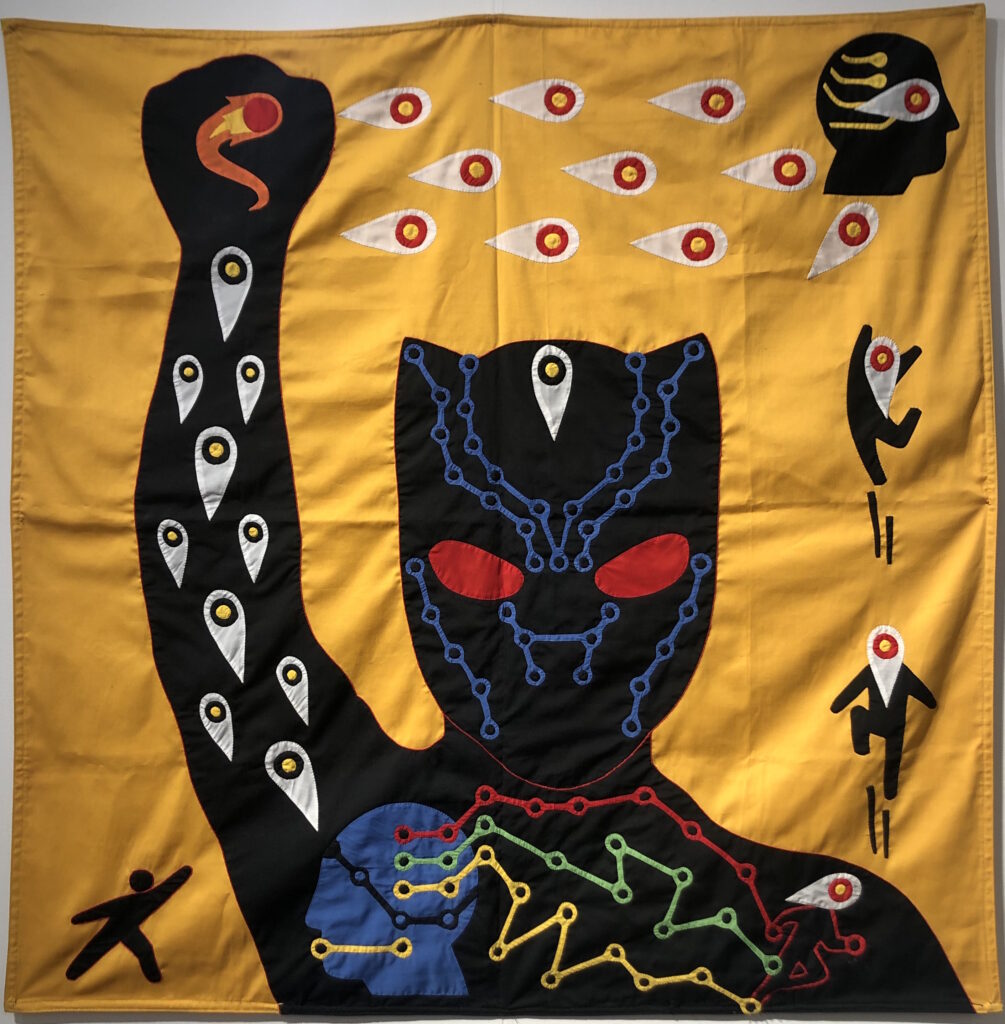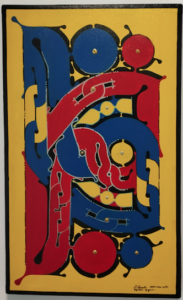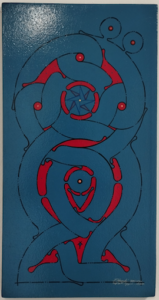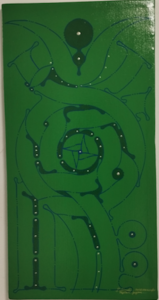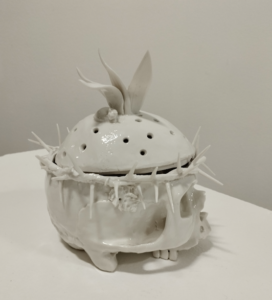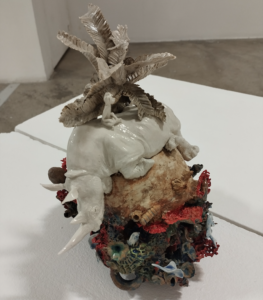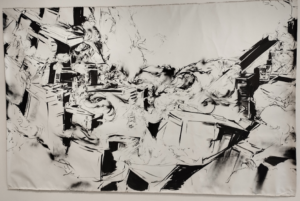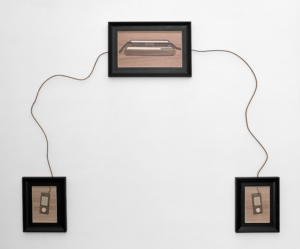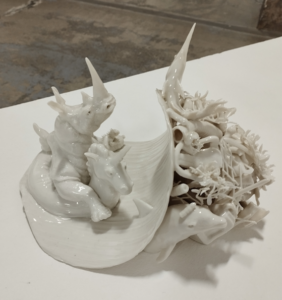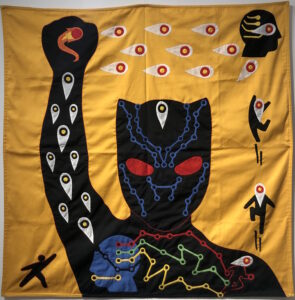EXPLORER
Emo de Medeiros
After a childhood and adolescence in Benin, he entered the Ecole Normale Supérieure in Paris, then the Ecole Nationale Supérieure des Beaux-Arts de Paris. He then focused particularly on digital arts, exploring the relationship between time and memory, transcultural spaces, and the questioning of traditional notions of origin, place or identity and their mutations. His works revolve around a unique concept he calls contexture, a fusion of the digital and the material, the tangible and the intangible, exploring hybridizations, interconnections and circulations of forms, technologies, traditions, myths and commodities.
Carlos Adaoudé
Carlos Adaoudé, who was born and lives in French Guiana, learnt to carve and trace the Koti Tembe with his father, and is already the sixth generation of Tembeman. He also learned from his elder brother Franky Amete to develop Tembe on canvas (Ferfi Tembe) in the 1990s. Both of them are once again renewing this traditional Tembe practice, this time freeing it from symmetry, broadening its polychromy, transferring it to other media, inserting it into design, rubbing it up against digital technology, making it monumental and propelling it into galleries and contemporary art fairs, continuing to trace their vanishing lines with dry point compasses.
Vivian Van Blerk
South African artist with a background in photography, Vivian Van Blerk now devotes his time to ceramics and lives in France. This material is an ideal medium for expressing the precarious beauty of existence. Therefore, each piece becomes the medium of a unique universe, representing a particular imaginary world and questioning our relationship with the world and with nature, at a time in the history of humanity when our activity threatens our environment. His works bring us face to face with a post-human world where nature, both animal and vegetable, reclaims its rights: a kind of soothing naturalist resurrection, but also a worrying warning about the future of our society.
Itvan Kebadian
The Parisian artist Itvan Kebadian combines different techniques to express on paper, canvas and walls the violence that permeates our society and that he has observed since he was a child. Scenes of revolt, insurrection and riots attract and question him. A society dominated by the profit motive, growing inequalities, cities in ruins, the clash of imperialisms and the exacerbation of nationalism seemed to him to be the breeding ground for the bloodiest riots. In his works he then becomes the witness to all this atrocity.
Rowan Smith
Rowan Smith was born in Cape Town in 1983 and graduated from the Michaelis School of Fine Art in 2007, winning the Michaelis Prize for top graduate, followed by an MFA degree from the California Institute of the Arts in 2012.meanwhile, in 2009, he was discovered by Galerie Dominique Fiat and exhibited in Paris in Objects of a Revolution, at the same time as exhibitions in California, Turkey and, of course, South Africa. His work takes the form of a multidisciplinary semiotic investigation into how signs and cultural signifiers can be read as artifacts. The physical materiality of works is as important to his research as the concepts that underpin them.
